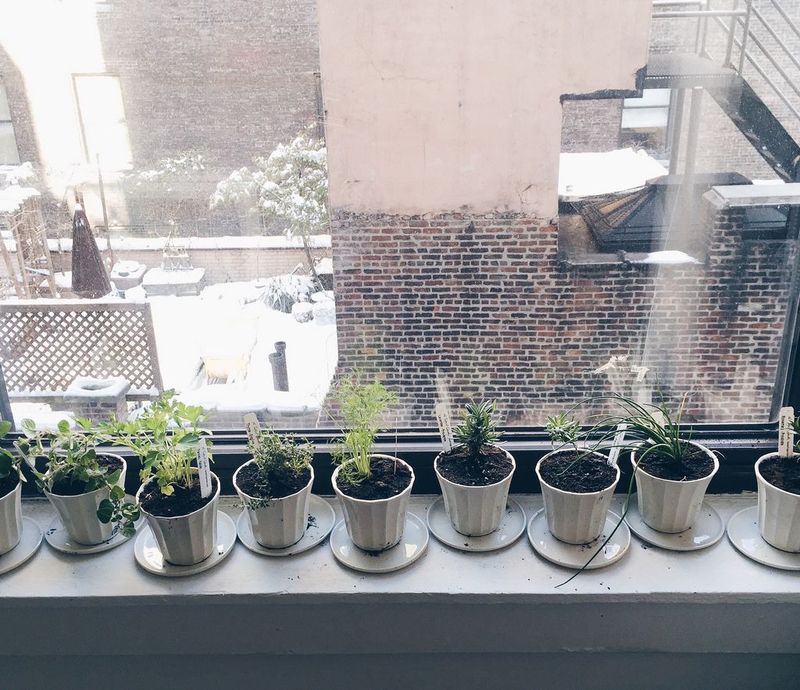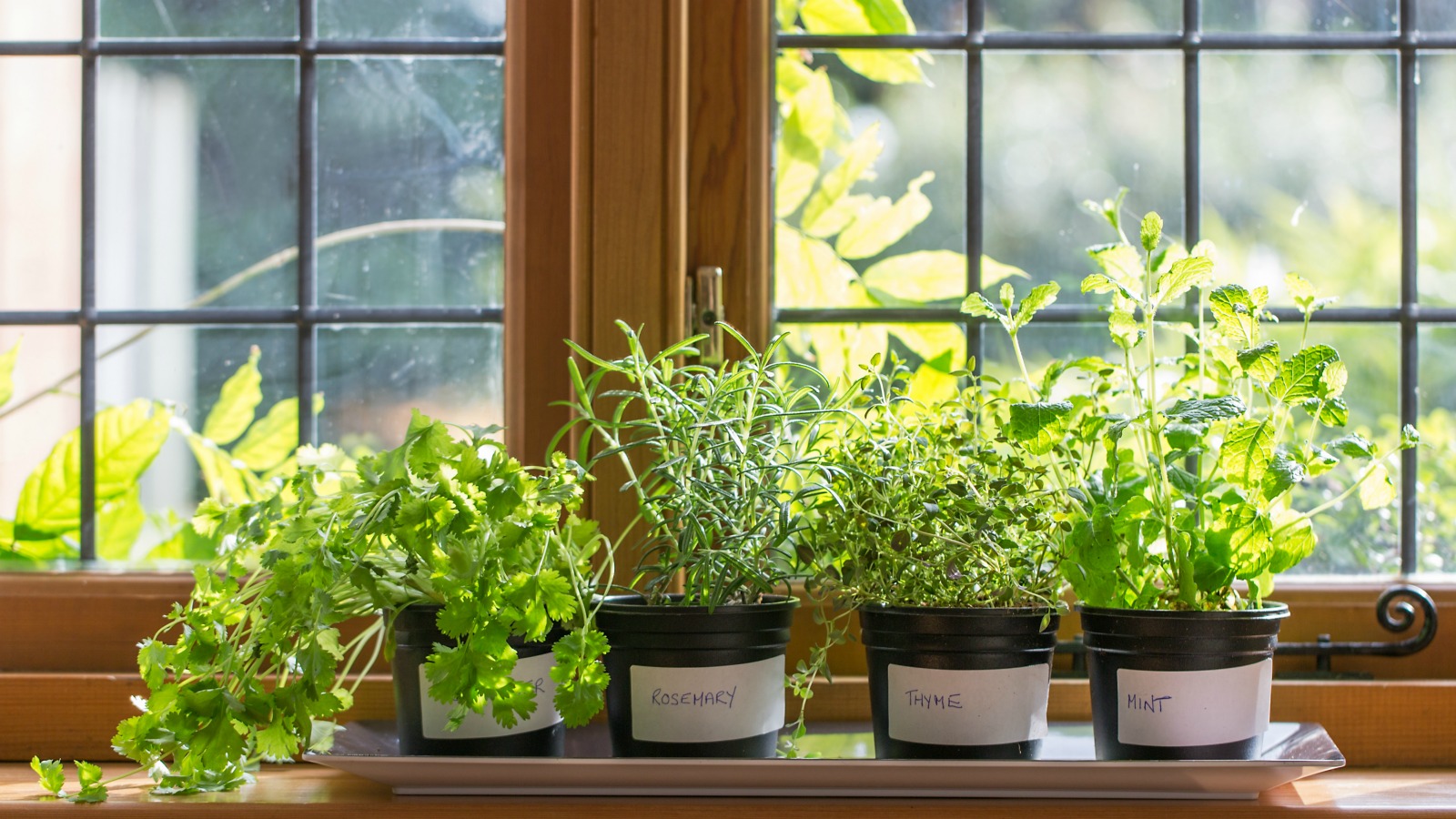Herbs! That’s your answer: Even if you’ve never planted anything, a mini, windowsill-friendly plot of herbs is a very good place to give gardening a whirl. It’s low-cost and low-risk: All you need are a couple of pots to grow in, a bag of soil, and a sunny window. Herbs tend to be compact, quick-to-grow, and useful — which makes them a very good place to start.

Food52/Sarah Jampel
Here’s what you’ll need:
- A pot for every kind of herb you want to plant. Pots should be two inches larger in diameter than the seedling you buy — or, if you’re buying seeds, at least six inches in diameter.
- Dishes to sit under those pots
- Soil
- A small amount of pebbles or gravel
- Seeds or seedlings (which are baby plants, just a couple of inches tall)
Seeds vs. seedlings:
Seeds
- Pros: They’re extremely rewarding — you get to see the little guy grow from a tiny seed into something you can actually use for cooking. Seed packets are also inexpensive!
- Cons: You’ll need to be a little patient. It can take over a month for a seedling to grow large enough to harvest.
- What to try: Basil, mint, and parsley: They’ll all grow fairly quickly and easily from seeds, and need similar things — moist soil and lots of sun.
Seedlings
- Pros: You already have a plant to start picking from — and now you just have to keep it alive.
- Cons: They can be expensive, and you might have to buy multiples to get the amount that you want.
- What to try: You have a lot of freedom here: Herbs that are harder to start from seed or simply take longer to sprout and grow (like woody ones, such as rosemary and thyme) are especially good to buy as seedlings.

Food52/James Ransom
How to plant:
Fill pots with a thin layer of gravel. Then:
- For seeds: Fill the pot with soil, leaving about an inch of the pot’s lip exposed. Plant the seeds according to the instructions on the seed packet: For the most part, this will involve make a series of shallow divots in the soil with your finger, dropping a few seeds into each, and covering the divots up with a thin layer of soil.
- For seedlings: Remove the seedling from its plastic pot and gently agitate the roots with your fingers. (This serves to wake the roots up a little and tell them to adapt to their new pot.) Fit the seedling into the pot, and fill in any gaps with soil, spreading a thin layer over the top of the seedling’s soil.
Don’t tamp the soil down! (Otherwise, air can’t get in.) Water your newly potted plants well (the soil should feel soggy but not muddy) and place in a very sunny spot. Basil and mint should sprout in the first or second week; parsley may not sprout until the third week (or even later — it’s a slow starter).

Food52/James Ransom
Remember!
- Not all herbs need the same care. While most like a lot of sun, some want their soil to be watered daily (like basil or mint) and some much less (like rosemary or thyme). The seed packets or information on the seedling’s container — or the Farmer’s Almanac, another great resource — should tell you what each specifically needs. Water accordingly.
- A sunny spot in your kitchen is one of the best places for herbs to grow — not only because you can reach over and snip a few leaves off any time you need them, but also because kitchens tend to be more humid, which many plants enjoy.
- If at first you don’t succeed, don’t be discouraged. Experiment! Try another sunny windowsill, switch up your watering schedule, and read up on herb care.



